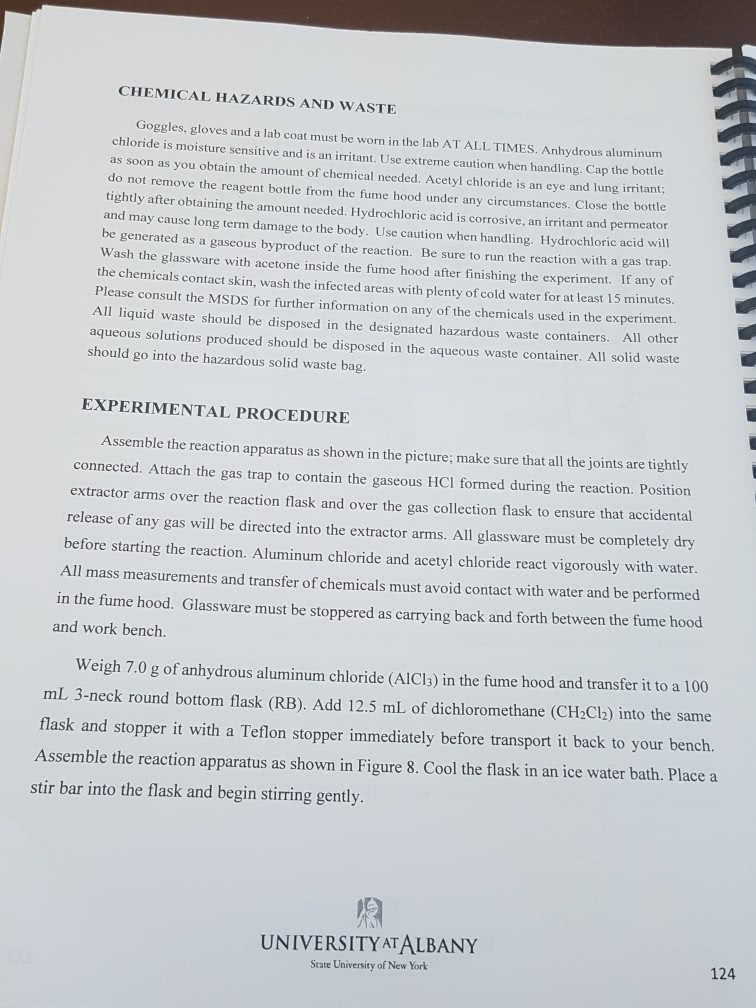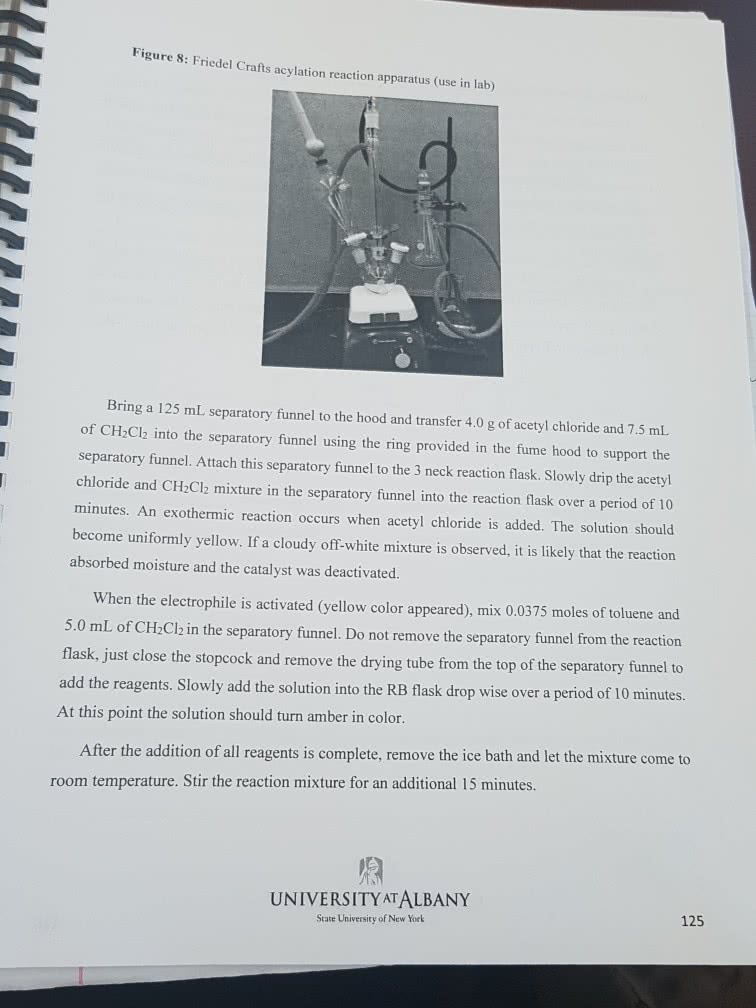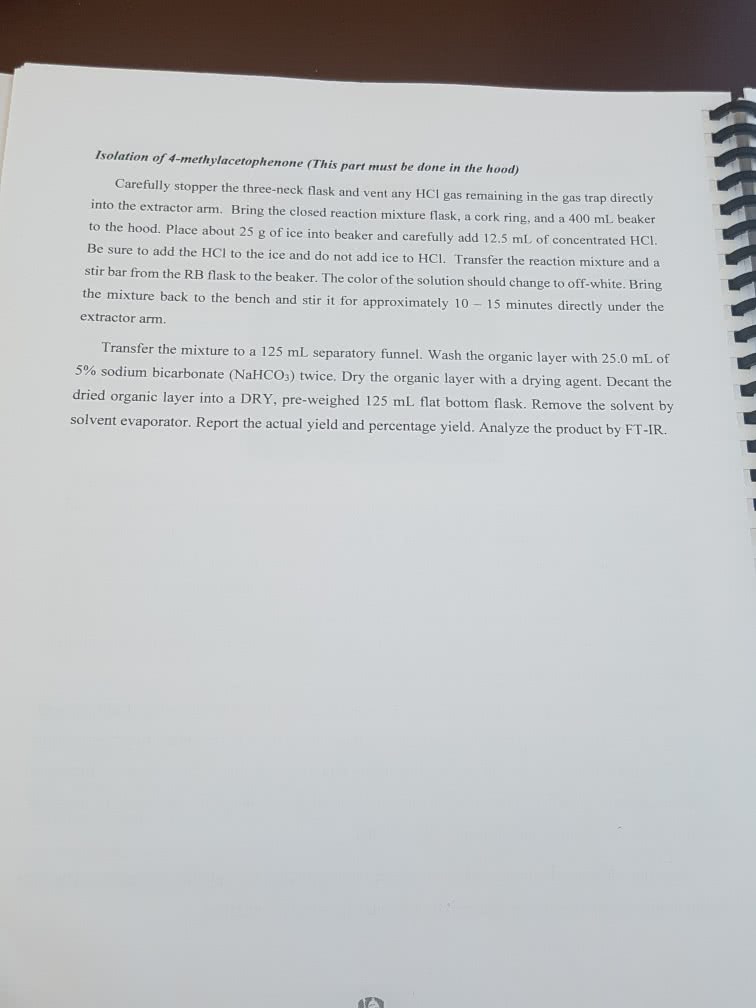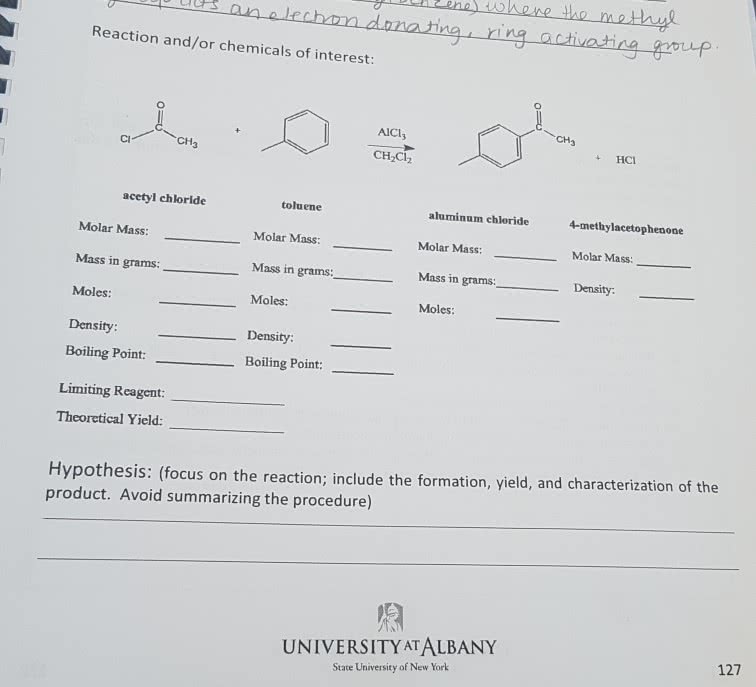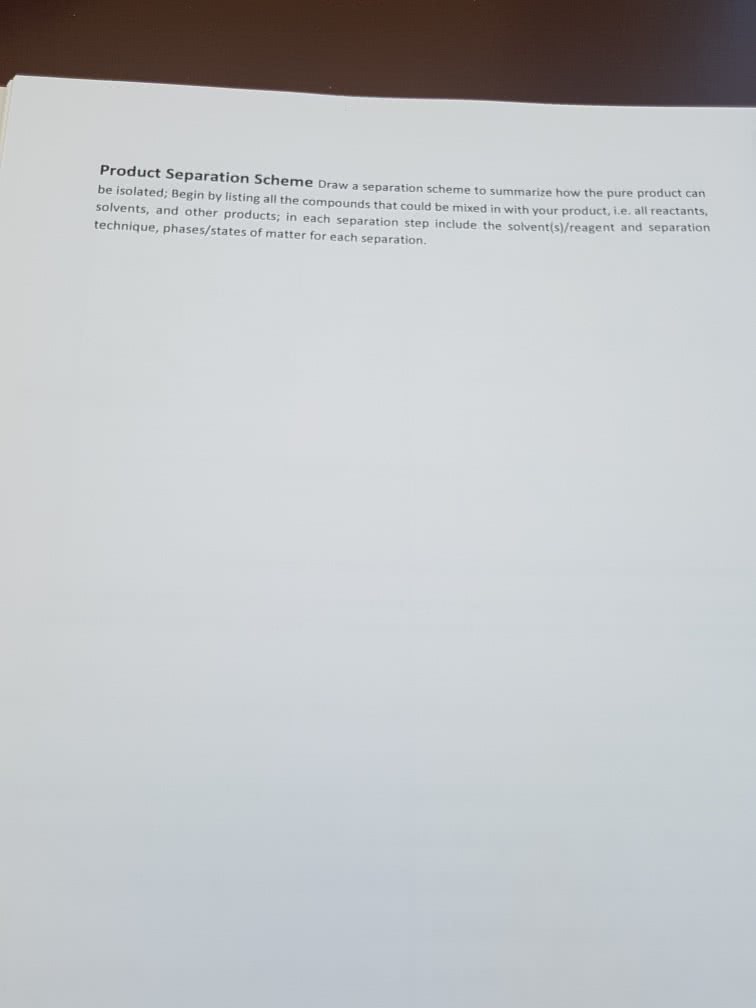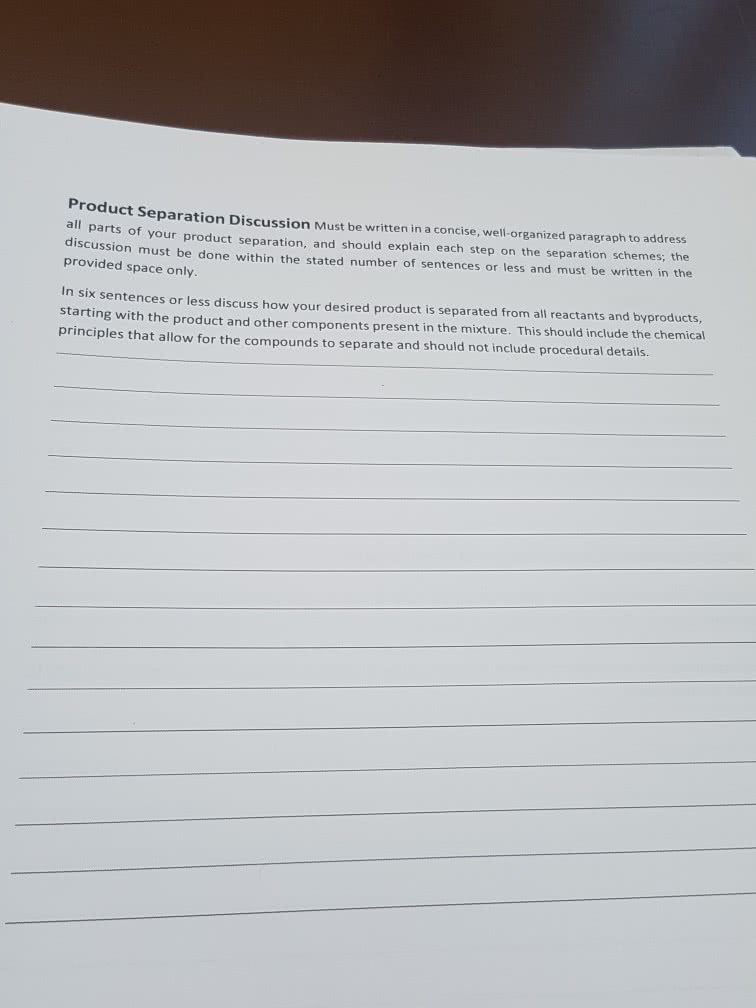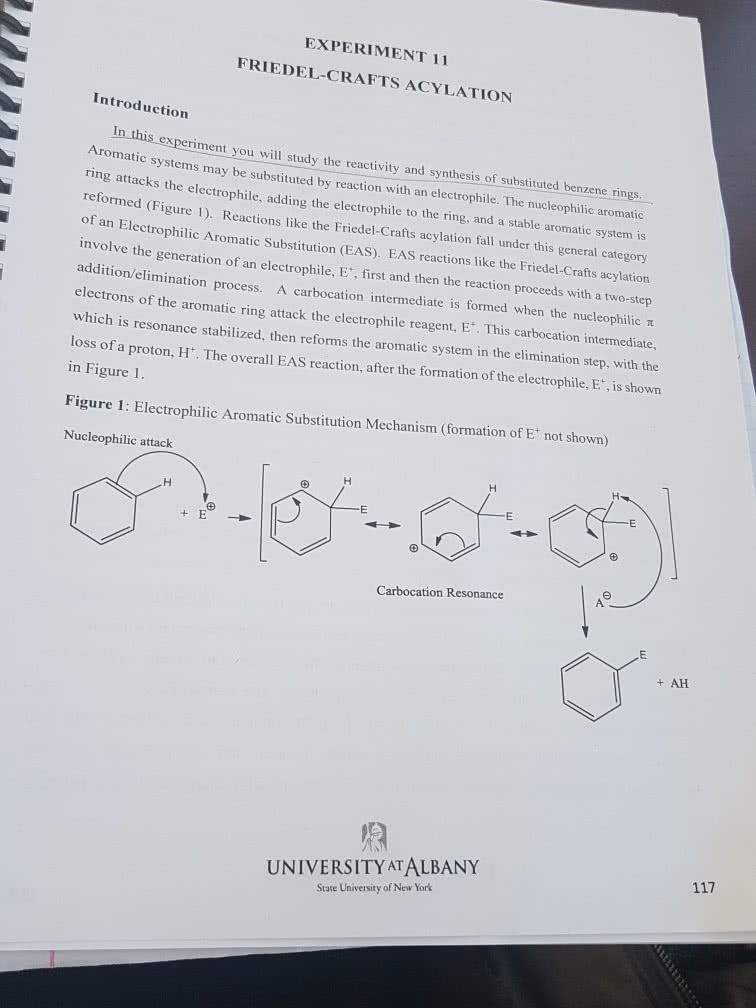Procedures: 1. Obtain a thermometer and place it on the bench at your work area. Be careful it does not roll off the bench. 2. Weigh an empty Erlenmeyer flask with a rubber stopper firmly capping it. Record the mass. 3. Place a small piece of solid CO2 (dry ice) in the flask (use about twice the amount you calculated in pre-lab question c). Place the stopper loosely on top of the flask. Watch the flask while the CO2 sublimes. Firmly stopper the flask immediately after all the solid CO2 disappears. 4. Wait until the flask is equilibrated to room temperature (around 5-10 minutes), and then âburpâ it by lifting one side of the stopper, and then quickly pushing it back in. This is to ensure that the pressure is the same inside and outside the flask. 5. Dry off any accumulated moisture from the outside of the flask, weigh the stoppered flask (on the same scale) and record the mass. 6. To determine the volume of the flask: fill the flask all the way to the brim with water and stopper it while holding it over a sink. If there is any air trapped inside, try again until only water is present inside the stoppered flask. The volume of the water should be the same as the volume of the air in the stoppered flask. Dry off the outside of the flask completely. Measure the volume of water in a graduated cylinder in batches and add up the volumes to get the total volume of all the water in the flask. Record this as the stoppered flask volume. 7. Read the thermometer in your work area and record the temperature. 8. Read the barometer in the lab and record the pressure in mmHg. Ask me if you need help with the barometer. Donât forget to correct the barometer reading for room temperature using the table hanging on the wall. Q: Why do we measure the volume of the flask with water rather than using the volume listed on the side?
Procedures: 1. Obtain a thermometer and place it on the bench at your work area. Be careful it does not roll off the bench. 2. Weigh an empty Erlenmeyer flask with a rubber stopper firmly capping it. Record the mass. 3. Place a small piece of solid CO2 (dry ice) in the flask (use about twice the amount you calculated in pre-lab question c). Place the stopper loosely on top of the flask. Watch the flask while the CO2 sublimes. Firmly stopper the flask immediately after all the solid CO2 disappears. 4. Wait until the flask is equilibrated to room temperature (around 5-10 minutes), and then âburpâ it by lifting one side of the stopper, and then quickly pushing it back in. This is to ensure that the pressure is the same inside and outside the flask. 5. Dry off any accumulated moisture from the outside of the flask, weigh the stoppered flask (on the same scale) and record the mass. 6. To determine the volume of the flask: fill the flask all the way to the brim with water and stopper it while holding it over a sink. If there is any air trapped inside, try again until only water is present inside the stoppered flask. The volume of the water should be the same as the volume of the air in the stoppered flask. Dry off the outside of the flask completely. Measure the volume of water in a graduated cylinder in batches and add up the volumes to get the total volume of all the water in the flask. Record this as the stoppered flask volume. 7. Read the thermometer in your work area and record the temperature. 8. Read the barometer in the lab and record the pressure in mmHg. Ask me if you need help with the barometer. Donât forget to correct the barometer reading for room temperature using the table hanging on the wall. Q: Why do we measure the volume of the flask with water rather than using the volume listed on the side?
For unlimited access to Homework Help, a Homework+ subscription is required.
Unlock all answers
Related textbook solutions
Basic Chemistry
Principles of Chemistry Molecular Approach
Chemistry: Structure and Properties
Principles of Chemistry Molecular Approach
Chemistry: A Molecular Approach
Chemistry: A Molecular Approach
Principles of Chemistry: A Molecular Approach
Chemistry: The Central Science
Related questions
Experiment 3: Charlesâ Law (Part 2)
Using the air in a flask, measure the change in volume with temperature.
| Materials: 2-Hole Rubber stopper | *Microwave or stovetop *You must provide | |
Procedure
Connect the syringe dispensing tip to the end of the syringe.
Set up your experiment by unscrewing the cap off the 250 mL Erlenmeyer flask. Then, press the 2-hole rubber stopper into the 250 mL Erlenmeyer flask. Push the thermometer into one of the holes in the stopper, and the syringe dispensing tip (connected to the syringe) in the remaining hole.
Create an ice water bath by filling an empty container (large enough to fit the 250 mL Erlenmeyer in it) with water and ice. The exact volumes do not matter.
Place the flask in the bath and allow the flask to cool to 0 °C (32 °F). You may need to pour additional ice around the flask to sufficiently decrease the temperature.
Monitor the temperature until the air reading in the flask is 0 °C.
Remove the flask from the ice bath and discard the ice/water from the bath container.
Allow the flask to warm to room temperature. As the flask warms up, record the volume on the syringe and the temperature on the thermometer in Table 4. The volume and temperature at room temperature are the initial (Time = 0) data. Note: The gas in the flask expands as it warms, slowly pushing the piston out of the syringe. The total volume of the gas in the system is equal to the volume of the flask plus the volume of the syringe.
Use the graduated cylinder to measure and add 100 mL of hot (but not boiling) water to the water bath container and place the flask in the warm water.
Continue to record the volume reading on the syringe and the temperature on the thermometer as the gas in the flask heats every five minutes for 30 minutes. Record your results in Table 4.
| Table 4: Temperature vs. Volume Data | |||
| Syringe Volume (mL) and Temperature (°C) at Room Temperature (Step 7) | Time (minutes) | Temperature (°C) | Total Volume (mL) |
| 0 | |||
| 5 | |||
| 10 | |||
| 15 | |||
| 20 | |||
| 25 | |||
Post-Lab Questions:
Graph your results as temperature vs. total volume. Draw a best-fit straight line through your data pointsand determine the formula for the line in Y = mx +b form. Donât forget to title your graph and label your axes. You may also use a graphing software program for more accurate data plots.
According to your graph, what would the total volume be at a temperature of 70 °C? 30 °C?
How do your results demonstrate Charlesâ Law? Use mathematical expressions to explain your answer.

